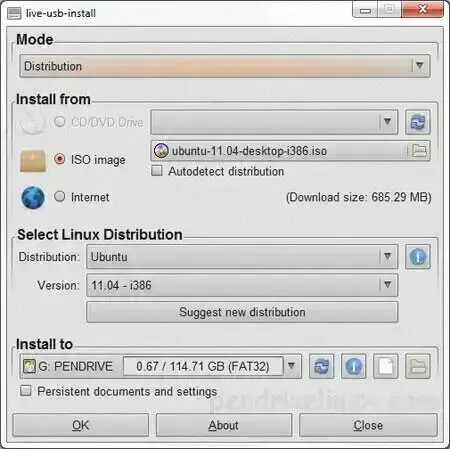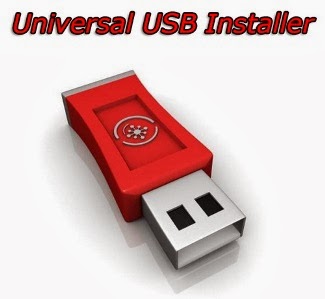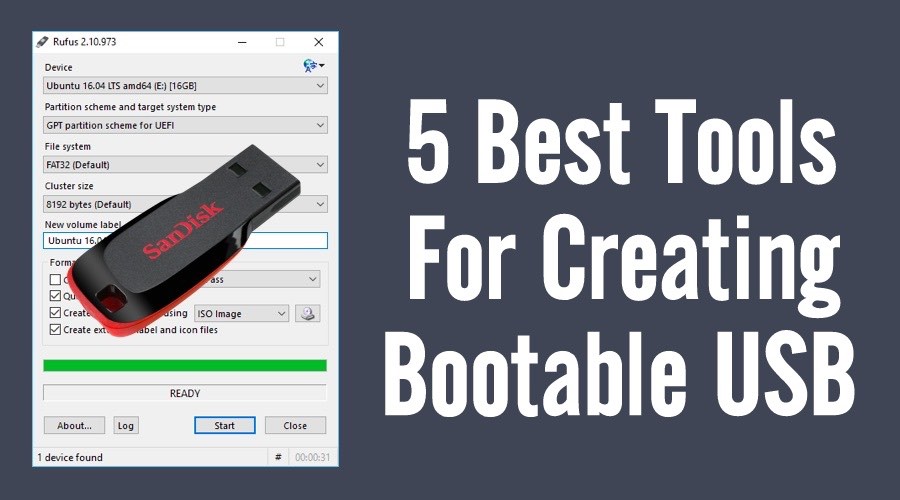

What those methods omit, including Apple’s own support doc on this topic, is that the USB key must support “ownership”. I’m here to share a tip for those who create a OS X installer on a USB stick but can’t get it to boot: Most guides mention the Terminal Window method of creating a bootable copy of the Mac OS installer, and the older OS guides mention using Disk Utility to do the same task. If you appreciate the function or functionality this software offers, we encourage you to support the authors.

Note: OWC has no affiliation with this software and receives no benefit related to this support (other than a benefit we all share in the continued support of these applications). Learn more: Check out more OS X El Capitan coverage from the Rocket Yard here. From that point you can follow the standard OS X prompts as they appear.) (Within the Startup Disk preferences, once you set the new bootable installer disk to be the active boot drive, you can click the Restart… button and the OS X installation process will begin. You can close this if you do not wish to begin the install process right away.ġ0.) Finally a dialog will pop up telling you that your boot disk is ready, giving you further options to quit, open the startup disk preferences so you can begin the OS X install process, and an option to make a donation. In our test, Step 8 took ~ 32 minutes.ĩ.) When the process is finished, a window should open displaying the contents of the new bootable drive. Because the application sets up more than 6GB of installer data via a USB connection (most thumb drives use USB 2 which has a maximum data rate of ~ 50MB/s), this process will take a while. Next you will see a small window with progress information on it as the installer disk is created the information will change as the process nears its end. Type in your administrator password and click OK. Click Continue.Ĩ.) Initially you will not see any windows for several seconds, then the administrator password dialog will appear.


DiskMaker X will remind you that administrator privileges are required. If you are OK with this click “Erase then create the disk”. Select the disk you want to use and click “Choose this disk”.ħ.) DiskMaker X will warn you that you are about to erase the disk. For this example, click the button that says “An 8 GB USB thumb drive”.Ħ.) DiskMaker X will find the available thumb drives connected to your Mac. Click “Use this copy”.ĥ.) Next you will be asked which kind of disk you want to use for your bootable installer. Click the button that says “El Capitan (10.11)”.Ĥ.) By default, DiskMaker X should find the OS X installer file you downloaded earlier. When finished, right-click in the disk image window and choose Eject Disk.Ģ.) Connect your USB thumb drive to your Mac, then launch the DiskMaker X application from your Applications folder.ģ.) A small window will appear asking you to choose from three versions of OS X, in order to create the boot disk. The application will only take a second or two to be copied into the folder (it’s a small file). Here is our brief walkthrough for making an install drive:ġ.) Launch the DiskMaker X installer and in the disk image window that appears, drag the application icon onto the Applications folder icon. So don’t forget to backup your data first.įor more about OS X 10.11 and its new features, check out our handy El Capitan Compatibility and Transition Guide. It should be noted that DiskMaker X erases the volume or the drive you chose, according to the options you chose. All you need is an 8 GB (minimum) USB thumb drive, a USB, FireWire, or Thunderbolt drive or an SD-Card the OS X 10.11 El Capitan Installer from the App Store (once the download is complete the installer file will appear in the Applications folder - do not move it) and the DiskMaker X installer. Like the previous versions, DiskMaker X is free of charge (however, donations are accepted). Luckily, DiskMaker X helps fill the void by allowing you to make a bootable OS X 10.11 El Capitan USB install drive, making a task such as installing on several different machines easier. So if you previously relied on DVD installs, you won’t be able to do so with this version. And as with previous OS X versions dating back to OS X 10.7, El Capitan is only available for install via download from the App Store. With OS X El Capitan, Apple has built on many of the changes that were brought on by Yosemite. UPDATE 09/2016: Create a Bootable macOS Sierra Install Drive with DiskMaker X UPDATE 09/2017: Create a Bootable macOS High Sierra Install Drive with DiskMaker X 7 UPDATE 09/2018: Create a Bootable macOS Mojave Install Drive with DiskMaker X 8


 0 kommentar(er)
0 kommentar(er)
